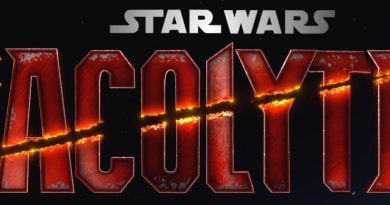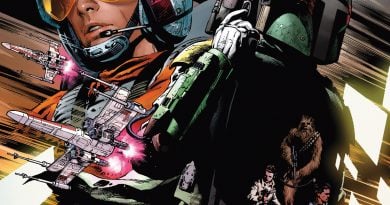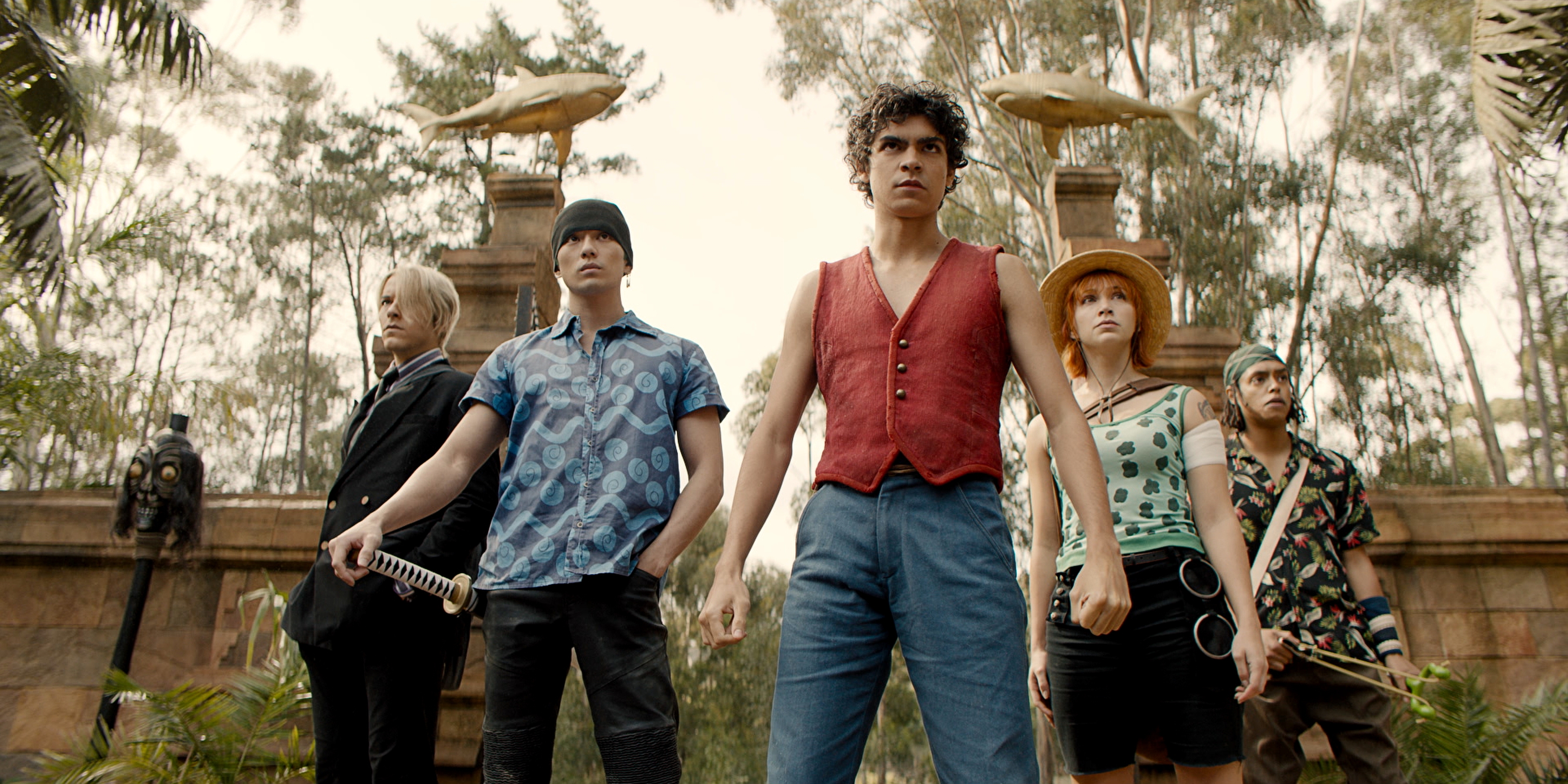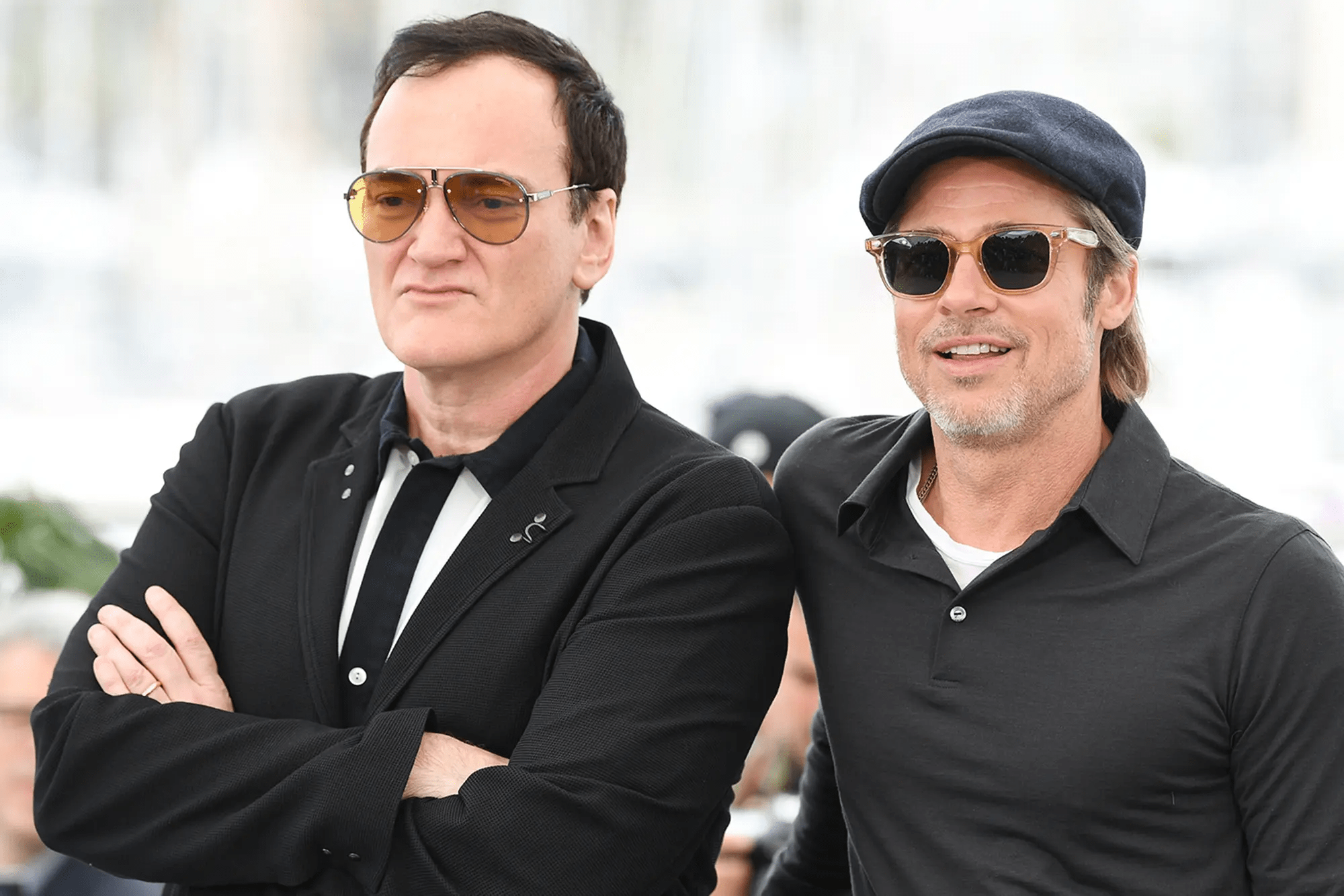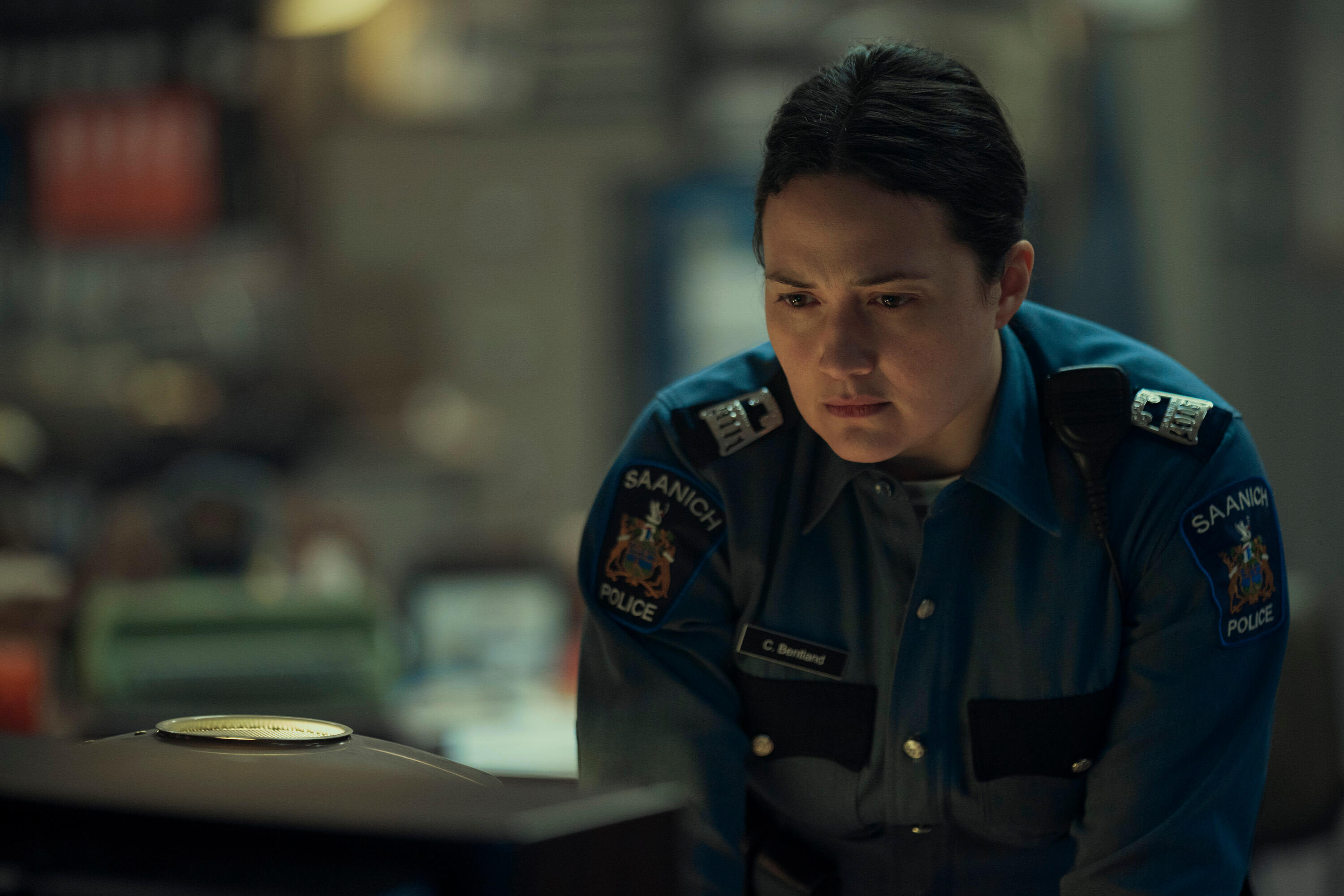‘Star Wars: Squadrons’ Review: A Lean and Mean Throwback to Old-School Flight Sims
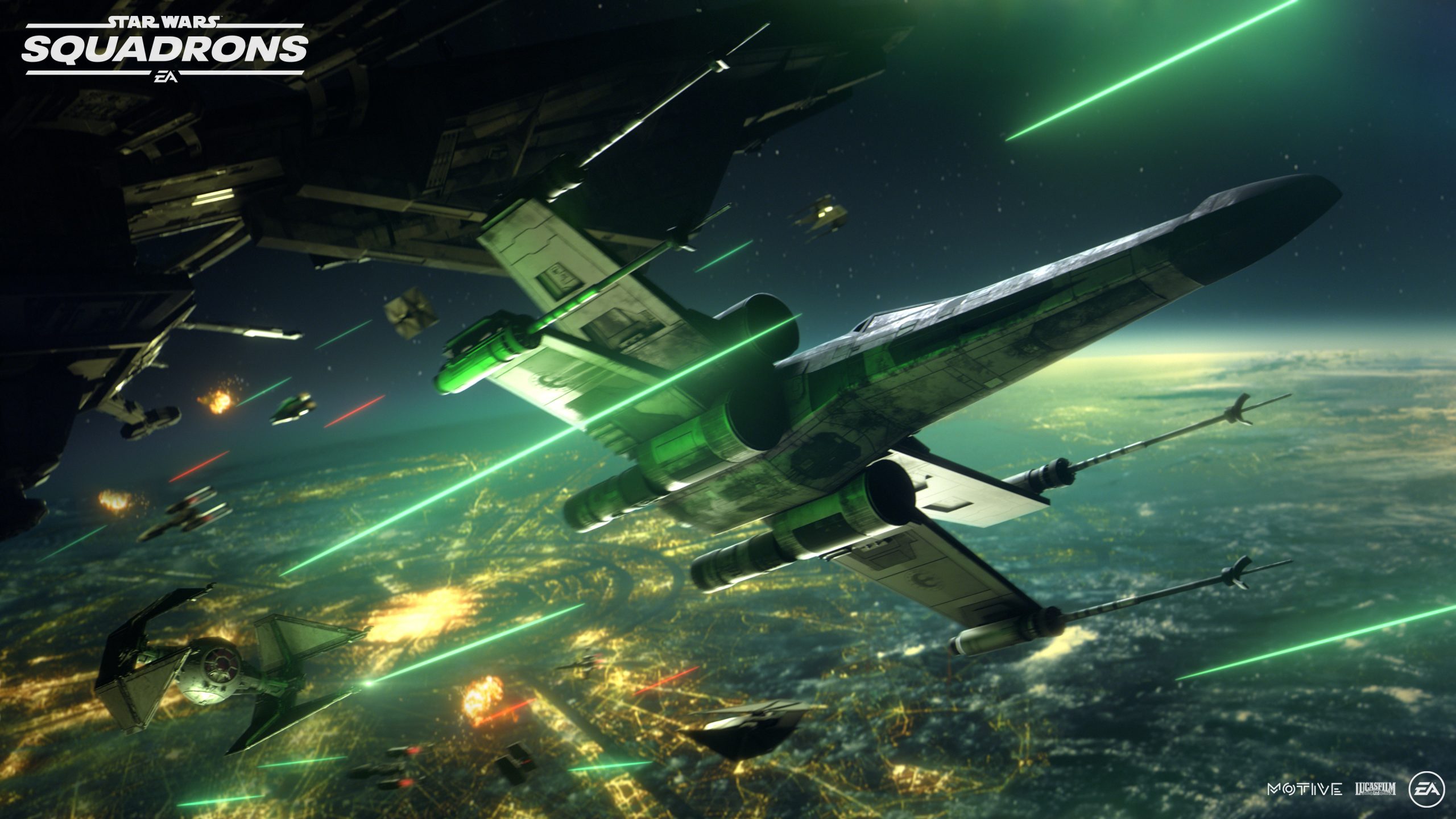
Your instruments start malfunctioning. Sparks and smoke surround you. The glass which separates you from the void of space begins to fracture. All you can hear is beeping and lasers roaring as you try to reroute the ship’s systems and avoid incoming fire. Welcome to Star Wars: Squadrons.
It has been more than 15 years since we last got a Star Wars flight sim. Jedi Starfighter and Rogue Squadron III (2002, 2003) marked the end of a rich era for flight sims set in a galaxy far, far away. Players just stopped caring about simply flying ships, and power fantasies took over the Star Wars brand.
After the success of two rebooted Battlefront games (despite some missteps along the way) and Jedi: Fallen Order, Disney and EA are taking a gamble with Squadrons; no big new Star Wars title was going to be ready for 2020, but what if a ragtag team of developers came up with a smaller, more focused release which aimed to bring back a semi-dead genre?
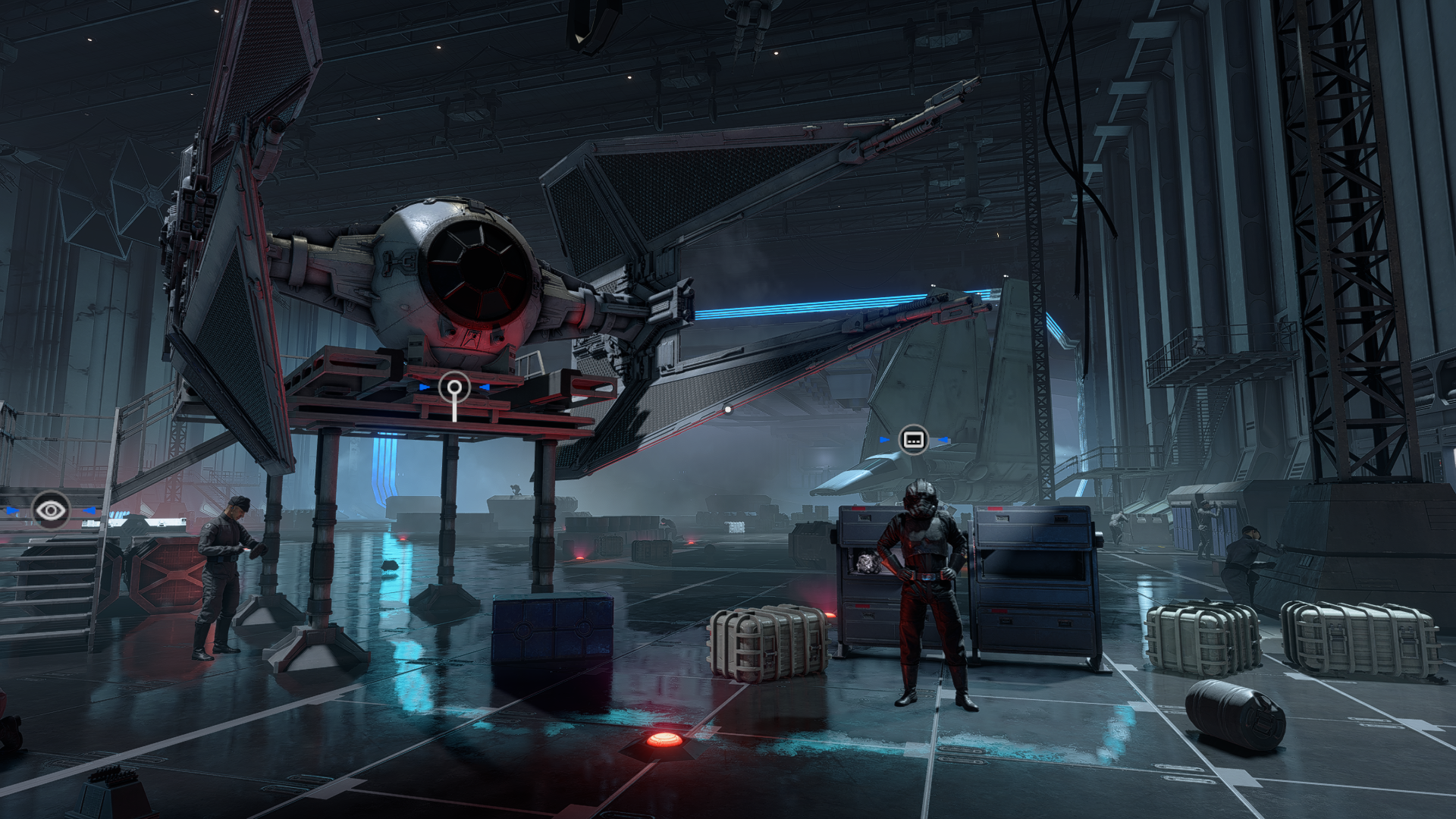
Star Wars: Squadrons features a single-player story set near the conclusion of the Galactic Civil War (after the destruction of the second Death Star) and two multiplayer game modes. That’s it. It feels adequately old school, both in its structure and the demanding gameplay. With no planned post-launch content or microtransactions of any kind, the game is complete from the get-go. Motive Studios has not completely closed the door on more playable stuff down the line (the game might sell really well), but all we are getting in the planned bimonthly competitive seasons are fresh cosmetics. Players who stick with the game will do so because they love it.
Of course, loving the game would not be possible if the core gameplay was not good. Thankfully, it is damn good. Ships have a weight to them, the feeling of varying degrees of speed and maneuverability is there, weapons pack a punch, and dogfights are methodical yet visceral. While starfighters in the last two Battlefront titles were fun to pilot and made for a nice break from the “boots on the ground” action, shooting down enemy fighters ultimately came down to aiming and shooting first (plus strafing in circles). That arcadey approach to flying got the job done, but something meatier was needed for a proper flying sim. Despite borrowing a fair amount of assets from DICE, Motive completely redesigned how ships behave and built many engrossing systems on top of them.
The game accepts different input systems: mouse plus keyboard (only on PC), gamepads, and a variety of HOTAS (joysticks). I myself have stuck to mouse + keyboard for the length of my pre-review time with the game, and I topped the scoreboards several times, but some competitive players are doing fine with gamepads too. Joysticks are obviously the optimal option if you have the extra money and space. All of these controls can be coupled with a selection of VR headsets, with EA especially recommending PS VR and Oculus Rift S.
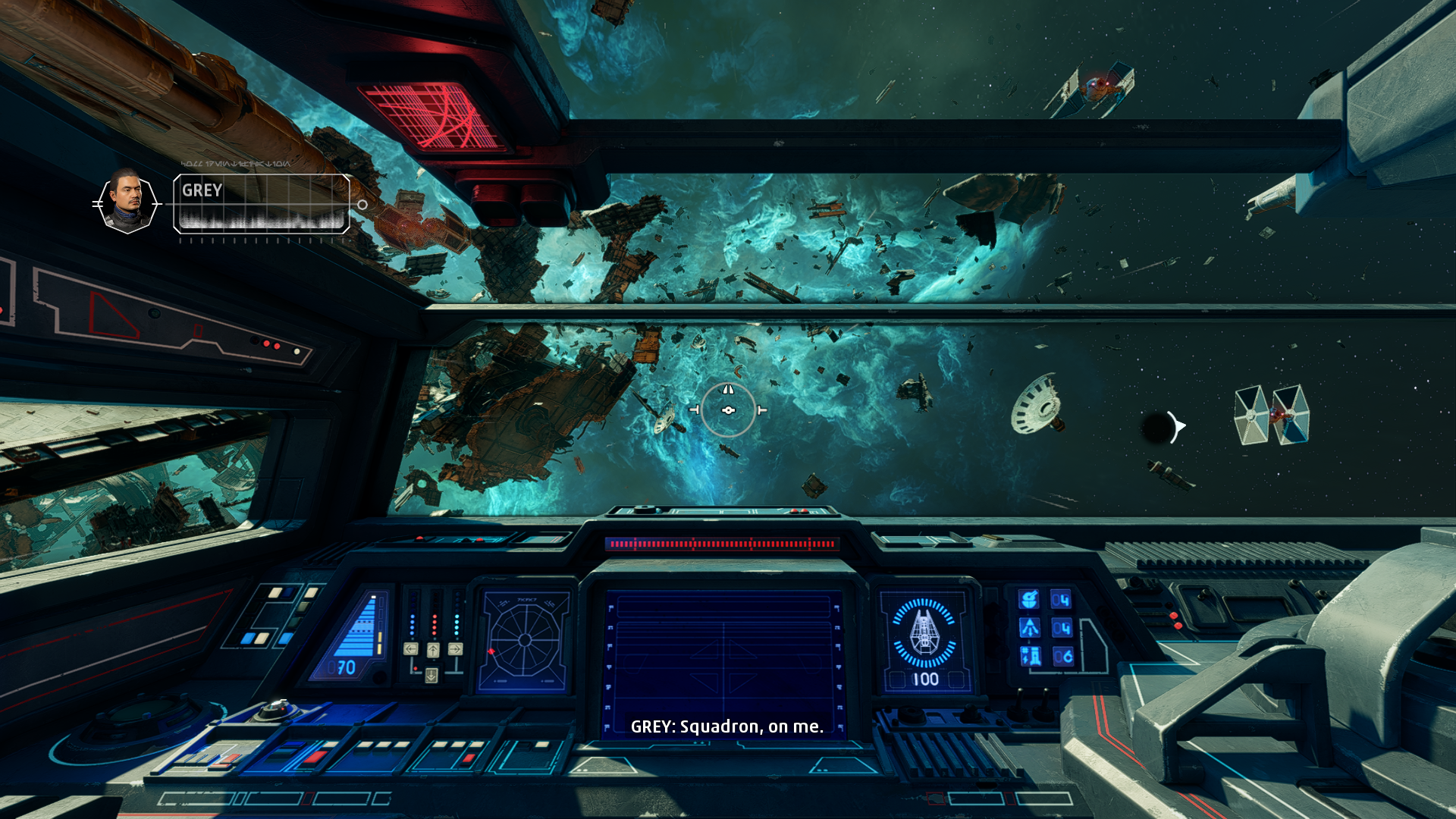
When it comes to storytelling, Squadrons takes us for a ride with two different groups of pilots, switching between the New Republic and the Empire a few times over the course of the campaign. Players also get to create a character at the very start of the game, and there are various voices to choose from, as the pilot actually has some (very basic) lines and is not a completely mute Link-esque protagonist. In between missions, ships can be customized to fit personal needs or playstyles after their standard versions are introduced.
The story’s biggest achievement might be its diverse cast of characters, who range from a tough cyber-enhanced Imperial pilot (think of a less messed up Vader) to a dodgy Trandoshan that left his clan and found a new home in the Rebellion. Aliens take a step forward in Squadrons, and the Empire is shown as way more than angry white fascists. There are some cool (and unexpectedly long) cameos too. It is a refreshing sight to say the least, and I wish future Star Wars movies and shows took a note from this. Give me an alien protagonist already!
Surprisingly, there is more to Squadrons‘s campaign than glorified battle scenarios, as both the script and the game’s structure manage to set up a convincing variety of missions and set pieces that very rarely take control away from the player. The motivations for the Imperial characters also feel more personal and understandable (wrong as they are) this time around. The last hour or so does not fully take advantage of the stakes the story sets up though; the conclusion is spectacular and thrilling, but its main players are left with their arcs partially unresolved, and the climaxes (yes, two of them) are shockingly bloodless. I honestly do not know if Motive was setting up a sequel, but the story is really simple and should have been properly closed up in this game. I also wish the campaign’s budget and structure had allowed for interactions with my flight buddies beyond paying attention to monologues full of exposition; learning about them often feels like listening to a Wookieepedia article.
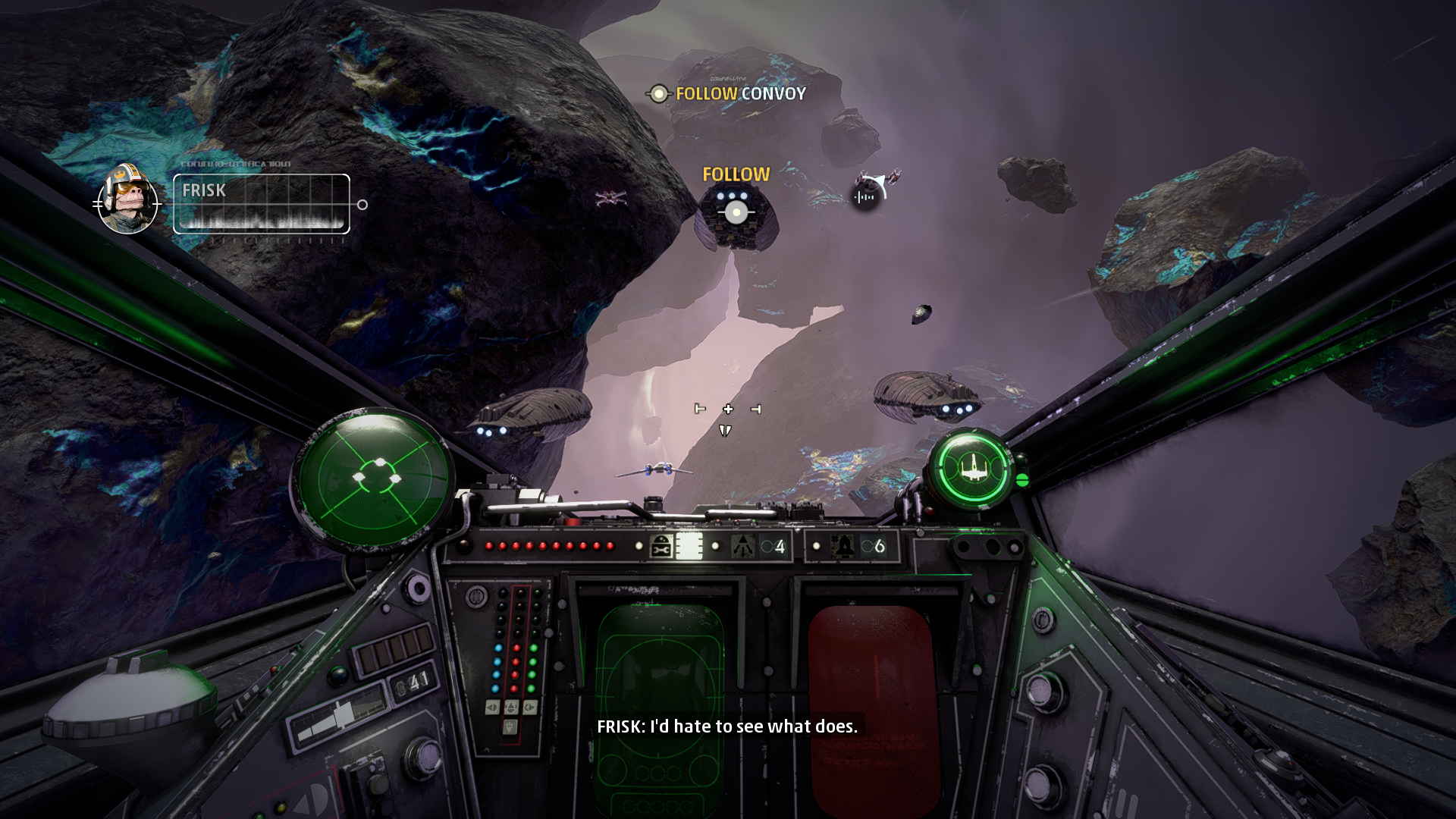
Multiplayer welcomes players with a suggested tutorial (with AI) of Fleet Battles, Squadron‘s signature mode. Going through both the campaign and this before hitting the real multiplayer experience is highly recommended, as the game’s systems and different ships offer a wide array of options and experiences. You can also play Fleet Battles with AI as much as you want to. Dogfight is all about skill and offers immediate 5v5 action. Once players hit level 5, they are allowed to join ranked Fleet Battles matches, which will be Squadron‘s bread and butter in the long run, as the mode tasks players with taking down enemy fighters and capital ships in a “tug of war” that never feels dull. Winning these matches allows pilots to rank up each season and access cosmetic rewards that will rotate in and out of the game. Of course, playing other modes (and completing goals) also yields XP, currency, and points that can be used to unlock new components, weapons, and non-rotating cosmetics for both starfighters and pilots. And no, you cannot buy anything with real money. Just play the game.
The fact this game is a technological marvel does not come as a shock. DICE’s Frostbite engine, which has been widely used this generation by many of EA’s studios, is as vibrant and gorgeous as ever, with Motive taking models and interiors even further. Although I still believe lighting and scenery looked a bit sharper in Battlefront II. Performance is also really impressive, with my low/mid-end PC (GTX 1060 6 GB, i7 4790k CPU, 16 GB of RAM) soaring above the recommended specs, which usually aim for High settings at 1080/60, and never dropping below 60 FPS on Ultra settings at 1080p. However, some players have hit stability issues related to VR and high refresh rates. Stability has been rock solid for me, but I did encounter refresh rate issues beyond 60 hertz (my monitor goes up to 75) that caused the game to feel sub-60 FPS, especially when moving the camera around interiors. Bringing the refresh rate down to 60 Hz fixes the issue, but it is kind of baffling that got past the QA teams. The folks at Motive already know about these issues and deployed a small patch yesterday, so these annoyances should be fixed soon.
As always in these games, the sound effects and music are top-notch too. Everything sounds like it is supposed to sound, and Gordy Haab’s score simply feels like proper Star Wars. It might be his “less good” recent Star Wars OST though, with Battlefront II and especially Fallen Order‘s scores being excellent and alarmingly Williams-like.
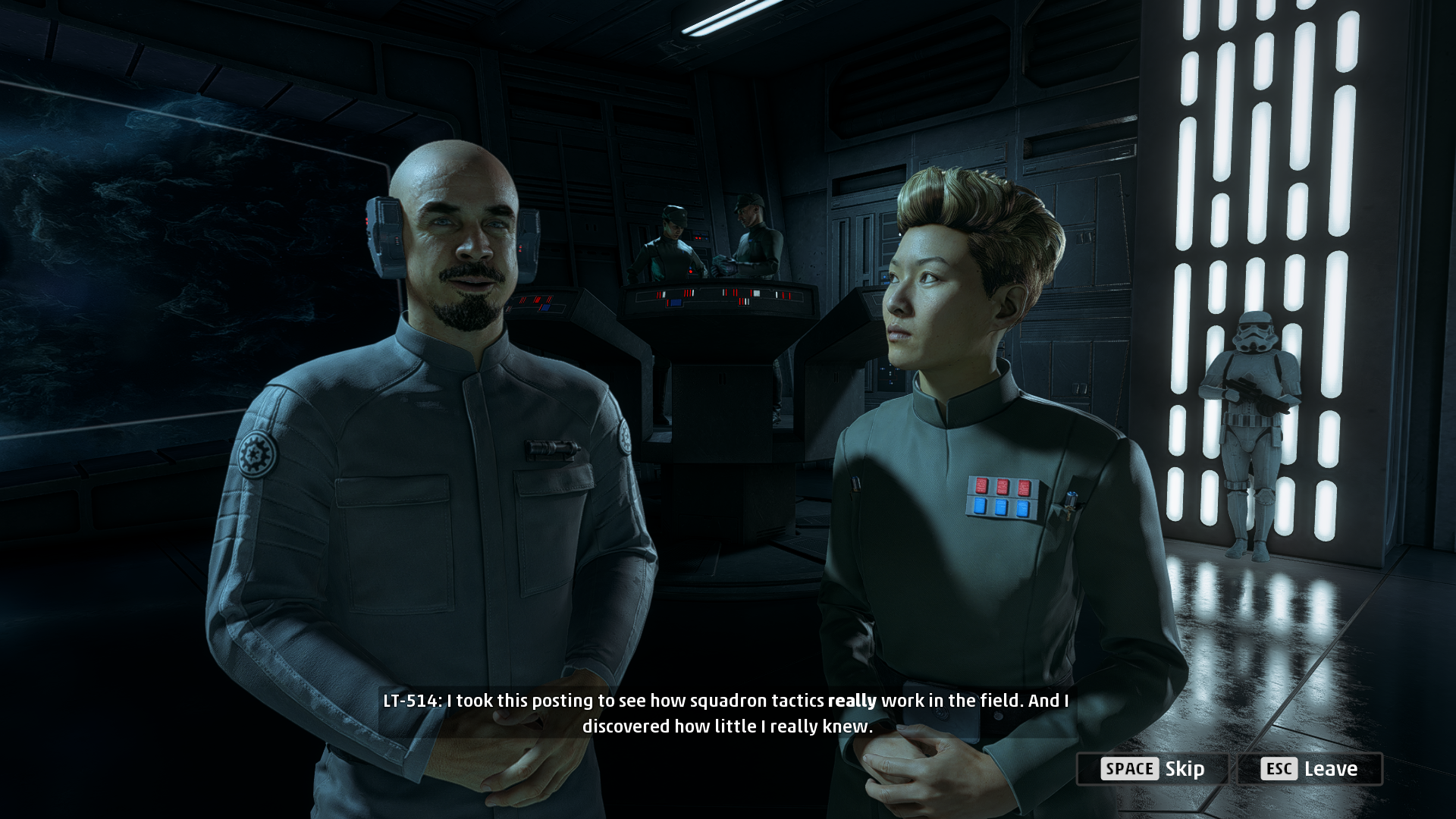
If you had not noticed yet, I think Star Wars: Squadrons is a good game. The question is whether it is a good game for you. While I believe EA and Motive’s gamble has undeniably paid off, I cannot help but wonder how much this game will resonate with the general audience. It feels like a test run for a greater project, but that does not make it any less impressive; everything works, and I applaud the decision to put out a franchise game that is not a massive AAA production nor a free-to-play casino for mobile phones. You get what you see. Like this niche offering well enough and you might get more. There is no catch.
I personally would have liked a post-launch roadmap of content supported by optional battle passes or paid cosmetics, as I feel the game’s foundation is solid and could really thrive with more maps, game modes, and ships. As it stands, its community will have to survive with six maps, eight ships, two game modes, crossplay, and an uncertain number of competitive seasons. And Squadrons might do fine enough, as there is nothing like it in the market right now: its battles are thrilling, and taking a Y-wing for a bombing run has never felt better.
Star Wars: Squadrons is available on PC, PS4, and Xbox One for a recommended price of $39.99 USD. PS5 and next-gen Xbox versions are said to be coming later, with free upgrades for console players being a possibility.
Thanks to EA for the review code.
Francisco J. Ruiz is that guy who has watched Jurassic Park a thousand times and loves Star Wars. His hunger for movies is only matched by his love for video games. He graduated in English Studies from the University of Malaga, in Spain. As he keeps writing about what he enjoys (and doesn’t) for websites all over, he’s continuing his studies.


